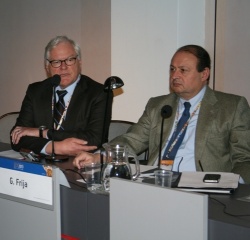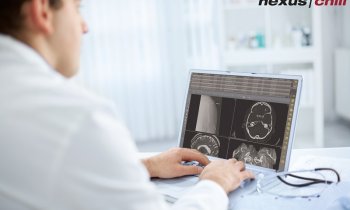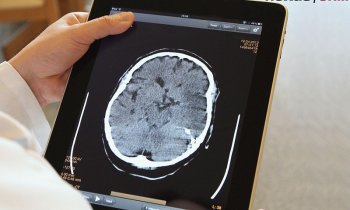How to maintain appropriateness and safety
Challenges to radiology in modern times
The second Management in Radiology session at this year’s ECR focussed on challenges for radiology coming from telemedicine, eHealth, appropriateness, and safety issues.

Dr Erik Ranschaert, radiologist at the Jeroen Bosch Ziekenhuis teaching hospital in s’Hertogenbosch / The Netherlands, summed up initial results from the new ESR Whitepaper on Teleradiology. Today, new methods of delivering services are developing at high speed, urged the expert; there is an increased commercialization, internationalization, and fragmentation of health services; and the impact of teleradiology is growing. In this changing environment, it is necessary to set standards in order to maintain quality levels and to protect patients as well as the discipline itself.
The European Union is investing huge budgets into technological innovation, explained Dr. Karim Berkouk, Deputy Head of Unit, DG for Research and and Innovation at the EC’s Health Directorate. An outstanding example is the FP7 Health Programme – the largest supra-national fund, supporting international consortia, PPPs and global cooperation. The 6.1 bn Euro research initiative involves players from Europe and from across the world, and it aims at delivering “excellent applied research and innovation”. “The programme tackles challenges which are too big for anyone country alone”, outlined Dr. Berkouk.
The drive for appropriateness requires referral guidelines
Imaging referral guidelines are available or in preparation in a large number of European countries, said radiologist Dr Denis Remedios, Northwick Park Hospital, Harrow/UK. He recommends Europe-wide Guidelines with dose information and separate guidance for children. A clinical audit can serve to encourage appropriateness, underlined Dr Remedios. Relevant initiatives include the MEDRAPET EU project which aims at identifying needs in radiation protection training. Target groups to address are referrers, radiologists, as well as the regulators, and key influencing aspects comprise evidence-based practice, education, and efficiency goals.
Dr Richard Fitzgerald, consultant radiologist at the Royal Wolverhampton NHS Trust in England, updated the audience on factors affecting safety of patients – today’s huge workloads and reporting speed have a severe impact on diagnostic precision. Dr Utku Senol from the Akeniz University School of Medicine in Antalya/Turkey rounded off the session with his presentation on probabilistic approaches suitable to foster objective decision making in radiology.
by Michael Reiter
10.03.2013











